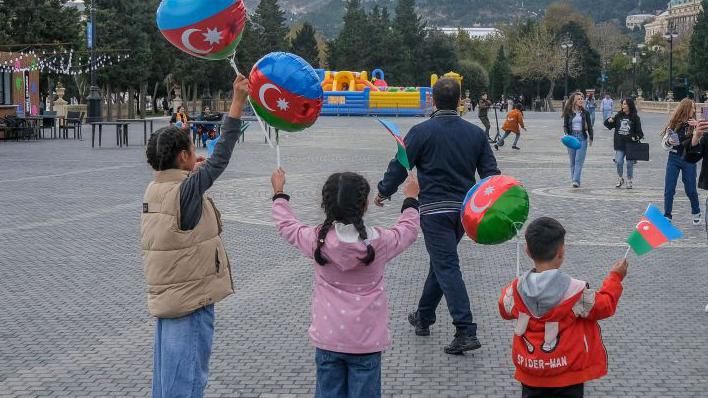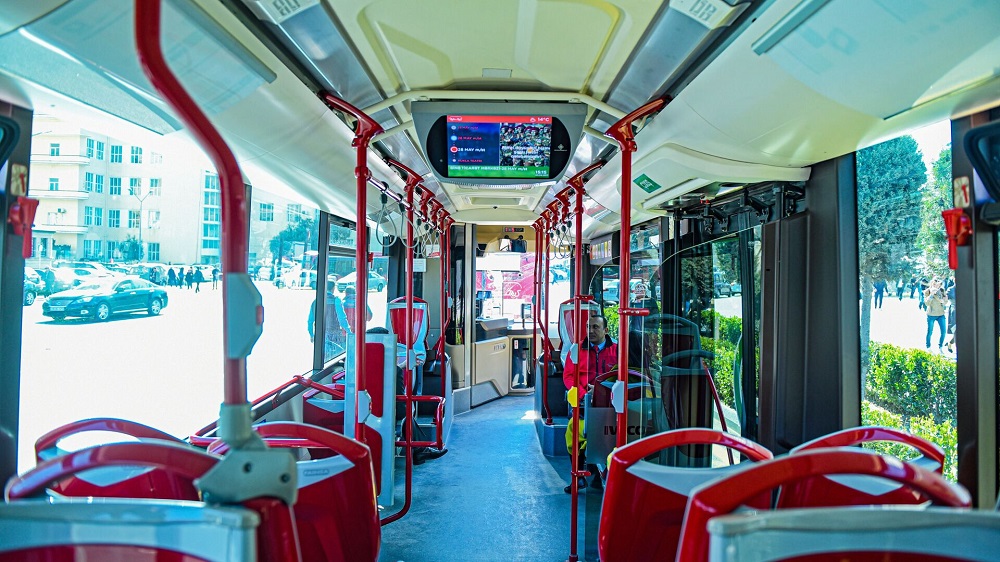Child allowance in Azerbaijan: why is it not paid?
Child allowance in Azerbaijan
The requirement to give child allowance to every child in Azerbaijan has been a topic of discussion for many years.
A BBC Azerbaijan editorial covered child allowance and why it is not paid in 9 questions. JAMNews presents the article with slight abbreviations.
- The European Commission granted Georgia EU candidate status
- Armenia-EU alliance. How to reach this level of relations? Opinion
- AbzasMedia case: how investigative journalists are hunted in Azerbaijan
Some public and political activists support the demand of low-income families for child allowance to every child in the country. Some economists, however, call such a proposal “political populism” and believe that it is “unrealistic” to pay a certain amount of money from the Azerbaijani state budget for every child in the country.
1. What is child benefit?
According to international practice, the so-called child allowance is financial assistance to each child inversely proportional to the family income.
In Azerbaijan, the government also pays allowances to families for children from different groups.
Every child born in the country, regardless of the social status of the family, receives a lump-sum allowance.
Also, depending on the situation, children from different groups continue to receive allowance until they reach different ages.
2. Why should child allowance be paid?

In some countries where there is no demographic growth, as the number of children in a family increases, the amount of child allowances increases.
MP Fazil Mustafa believes that in Azerbaijan allowances should be given to all children aged 1 to 6 years old:
“Because it means solving problems related to these children in the future. It means the health of men who will be called up for military service in the future and women who will become mothers, which is what the funds should be spent on. If they are not spent now, they will come from the state’s pocket in the form of medical and other services in the future,” he says.
However, Mustafa also says that since unemployment is an issue for a number of families in the country, they view child allowance as unemployment compensation, “which begs the question. In such matters, the main goal is to spend the money on the child.”
3. How many children are there in Azerbaijan?
According to the data of the Statistical Committee of Azerbaijan for 2022, 2 million 613 thousand children and adolescents aged 0-17 years live in the country. In 2021, this figure amounted to 2 million 634 thousand people.
However, there is no information about the number of adolescents under 17-18 years old among the figures presented by the committee. The statistics committee said that no statistics of adolescents in this age were kept.
The Ministry of Labor and Social Protection of Population also states that they do not have such data.
4. How many children in Azerbaijan receive allowance?
The Ministry of Labor and Social Protection of Population has reported that this year 120 thousand children in Azerbaijan received a lump sum birth allowance of 500 manat [about $300], while last year this amount was 300 manat [about $180].
In addition, 50,000 children with disabilities under the age of 18, more than 160,000 children who have lost a parent, up to 160,000 children from low-income families receiving targeted social assistance, children from the families of shekhids, war invalids, women with 6 or more children, as well as 30,000 children of military personnel, are being provided with monthly social payments.
A statement from the ministry says that “monthly benefits are paid to 40 thousand working parents who raise children under the age of 3 years”.
This means that child-related social payments in the country cover more than 600,000 people, and 650 million manats [about $380 million] is spent annually on these payments.
5. What are the benefits of the child allowance?

MP Fazil Mustafa believes that there is a demographic problem in Azerbaijan and the government should restore child allowances to encourage large families. Azerbaijan discontinued the so-called monthly “child allowance” for each child in 2006.
Several years ago, Labor and Social Protection Minister Sahil Babayev said there was no need to stimulate birth rate growth, arguing that there were no demographic problems.
Some doctors, deputies, and representatives of non-governmental organizations in Azerbaijan claim that there are problems with selective abortions in the country.
The UN has linked selective abortions in the country to the “economic conditions” of the population.
A 2014 study conducted by the UN Population Fund in collaboration with various agencies found that in Azerbaijan, “economic conditions and social norms encourage women to have fewer children, but also dictate the presence of at least one male child in every family.”
6. What are the criteria for child allowances in Azerbaijan?
Gubad Ibadoglu, an economic analyst who is currently in prison, told the BBC media corporation in June that “the Azerbaijani government could give tax breaks to families depending on the number of children in order to support children and at the same time as a solution to the demographic problem”.
MP Fazil Mustafa responds to demands that “every child should be paid a monthly child allowance” by saying that the principle is outdated from Soviet times. According to him, during Soviet times the financial situation of families did not change for many years. But now the situation is different, and people’s financial situation may change in a year or two.
Therefore the deputy proposes to define specific criteria and “to register families in need in order to flexibly change these criteria and make it possible to check.”
It is also proposed to make these allowances accountable to ensure that the money is spent on children:
“So the form of the allowance is per child. A parent who does not spend the money as intended can be held accountable.”
7. Why does the government in Azerbaijan not pay a monthly allowance for each child?
People in power and in the opposition of Azerbaijan, as well as members of the Milli Majlis often, speak on this topic, put forward proposals, emphasize that it is necessary to find a solution to this issue.
So why doesn’t the government solve this issue once and for all?
Fazil Mustafa says that “in today’s modern capitalist era there is no principle to pay everyone, there is a principle to pay those who need it.”
“There is a family that has no income, money does not go to their house. There is also a family that is able not only to provide for themselves but also to help others. State aid to this family is not in line with the principle of common justice. Considering this, it is necessary to increase the forms of allowances for low-income children.”

8. And can the government afford to pay child benefits to every child?
Until 2006, the monthly child allowance in Azerbaijan was paid to every child, regardless of his or her level of support.
Individuals, deputies, and socio-political activists propose different amounts for each child across the country – from 500 to 2,00 manat [approximately $300 to $1,200], depending on need.
Economic analyst Natig Jafarli does not consider the figures realistic and calls such proposals “political populism.”
He says the budget is currently unable to provide child allowances for all children in the country.
Sahil Babayev, head of the Ministry of Labor and Social Protection, said several years ago that child allowances in Azerbaijan could cost the budget dearly.
“…Currently, there are more than 2.7 million children under the age of 18 in Azerbaijan. If we take into account proposals to allocate 100 manats [about $60] of child allowance per month, this would amount to 3.3 billion manats per year [about $2 billion]. Since social programs are usually prepared for 10 years, more than 30 billion manats [about $18 billion] is needed to provide child allowances during this period.”
Economist Jafarli also believes that the funds required to pay child allowances to each child are “excessive” for the current budget.
The analyst also emphasizes that “the question to be asked is not why the country does not pay child allowances, but why the budget is so small in a country with such large revenues”.
Azerbaijan’s budget revenues for 2023 will amount to about 34 billion manats [about $20 billion], while expenditures will amount to 36 billion manats [about $21 billion].
9. What is included in the minimum consumer basket for a child in the country?
Experts say that although the average monthly salary in the country is 928 manat [about $546], the real monthly salary (median) is about 459 manat [about $270].

In the section on the composition of the minimum consumer basket approved by the Cabinet of Ministers of Azerbaijan, the annual volume of food products for children under 14 years of age is classified as follows:
Fruits, vegetables and potatoes – 216.4 kilograms, milk and dairy products – 247.5 kilograms, fish and fish products and meat and meat products – 30 kilograms together, eggs – 169 pieces, oil – 6 kilograms and bread – 98 kilograms.
In the minimum consumer basket, the non-food section includes three coats for children under 14 for 2.6 years.
12 pieces of suit-type outerwear and clothing are designed for two years, six pairs of socks and six pairs of shoes – for 1.3 years, headgear – for 4.3 years.
The 41 school supplies are for one year.
This list also includes bed linens – 11 pieces for seven years. Ten percent of the expenditures of the minimum consumer basket is allocated for non-food items.
Under the section of other services for children, 12 square meters of living space, 12 cubic meters of hot and cold water supply and sewerage, 21 cubic meters of gas, and 50 kilovolt electricity are allocated.
15 percent of the minimum consumer basket for children is allocated for 370 public transportation rides per year and for other services not specified in the list.
The monetary equivalent of the cost of the consumer basket is not specified in the decision to amend Cabinet Decision No. 118 of June 23, 2005, “On Approval of the Composition of the Minimum Consumer Basket”.
Economist Jafarli emphasizes that the procedure for calculating the minimum consumer basket in Azerbaijan does not meet modern standards.
“For example, when calculating the subsistence minimum, our indicators are taken at such a low level that the figures are understated. For example, internet expenses for a family of four are indicated for one hour a day. Or when calculating the minimum consumer basket, the calculation is based on calories. In order to meet the calorie norm, the most bread is taken, and the daily norm per person is calculated from 270 grams. Thus, since bread is cheap, it leads to a decrease in the size of the minimum consumer basket. Total consumption of nine grams of butter per day is calculated. We know that this is a very low figure. What can be done with nine grams of butter?”
The situation is the same with non-food items, Jafarli says, and suggests paying attention to their list and period of consumption:
“Let’s look at the list of clothes, the basket assumes a change of outerwear about once every three years. So it is assumed to wear one piece of clothing for three years. Those are also very low rates.”
Jafarli says these figures are calculated according to Soviet standards, “and the subsistence minimum and the minimum consumer basket should be calculated according to the new rules.”






















